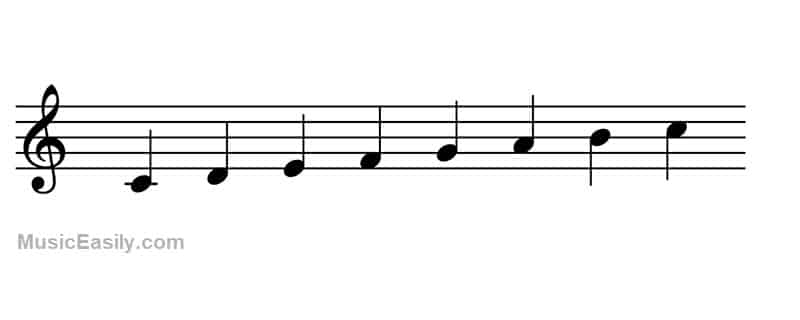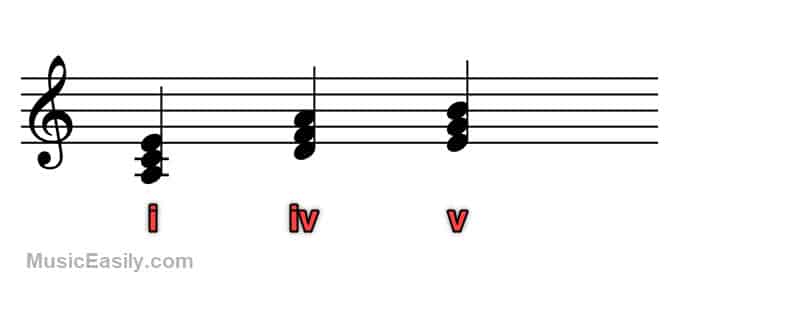Diatonic chords are a set of chords built from the notes of a diatonic scale, forming the structural backbone of a song’s tonality. These chords shape the melody and harmony in major and minor keys.
Introduction
Chords form the bedrock of compelling musical compositions. Diatonic chords originate from the seven notes of a diatonic scale, creating a versatile yet structured framework that underpins the tonality of a song.
Whether working in a major or minor key, these chords influence the direction and mood of your music. This article aims to provide a succinct and clear explanation of diatonic chords, emphasizing their pivotal role and relevance in your compositions.
By understanding diatonic chords, songwriters and music producers gain access to a comprehensive harmonic framework.
What are Diatonic Chords?
Diatonic chords are a series of chords derived from the seven individual notes of a diatonic scale. In a diatonic scale, the intervals between the notes form a specific pattern of whole and half steps.
For a major diatonic scale, this pattern is: whole step, whole step, half step, whole step, whole step, whole step, half step (W W h W W W h).
For a minor diatonic scale, the pattern is: whole step, half step, whole step, whole step, half step, whole step, whole step (W h W W h W W).
The term “diatonic” implies that these chords are built exclusively using the scale’s notes, without any alterations or additions.
To build a diatonic chord, we start from each note in the key, building a “stack” of notes known as thirds, named as such because each note in the stack is a third interval above the previous one.
The specific arrangement of whole and half steps makes each chord unique, leading to different “flavors” or qualities of chords: major, minor, and diminished.
When represented in a scale context, each chord is often depicted by a Roman numeral, which denotes the scale degree upon which the chord is built.
Uppercase numerals represent major chords (I, IV, V), lowercase numerals represent minor chords (ii, iii, vi), and a lowercase numeral with a degree symbol represents a diminished chord (vii°).
Let’s examine how these chords come to life in major and minor keys.
Diatonic Chords in Major Keys
Let’s delve into the world of major keys to clarify. Every major key encompasses seven distinct notes. We can derive seven unique triads or chords from these – one for each note in that key.
How do we do this? By building a “stack” of notes starting from each note in the key. We call these stacks “thirds” because each note in the stack is a third interval above the previous one. And we only use notes from the key we are in.
Consider the key of C Major, which consists of the all-natural notes (without any sharps or flats) – C, D, E, F, G, A, and B.

By building a triad (a “stack” of two “thirds”) from each of these notes, using exclusively notes from the C Major scale, we acquire the following chords:
| Chord Name | Degree | Chord Quality | Root Note | Notes Composing the Chord |
|---|---|---|---|---|
| C major | I | Major | C | C-E-G |
| D minor | ii | Minor | D | D-F-A |
| E minor | iii | Minor | E | E-G-B |
| F major | IV | Major | F | F-A-C |
| G major | V | Major | G | G-B-D |
| A minor | vi | Minor | A | A-C-E |
| B diminished | vii° | Diminished | B | B-D-F |

Each of these chords has a specific “flavor”: major, minor, or diminished.
The pattern major, minor, minor, major, major, minor, diminished (M m m M M m d) holds true for all major keys. It’s a vital guide for composers and songwriters to craft songs in a specific key.
Diatonic Chords in Minor Keys
The concept applies equally to minor keys. Every minor key also contains seven unique notes, which allows us to form seven distinct chords.
We do this by starting from each note in the key and building a “stack” of notes, with each note being a third interval above the previous one, using only notes from the key.
For our example, let’s use the key of A minor (the relative minor of C Major) which consists of all-natural notes (without any sharps or flats) – A, B, C, D, E, F, and G.

By building a triad (a “stack” of two “thirds”) from each of these notes, using exclusively notes from the A minor scale, we acquire the following chords:
| Chord Name | Degree | Type of Chord | Root Note | Notes Comprising the Chord |
|---|---|---|---|---|
| A minor | i | Minor | A | A-C-E |
| B diminished | ii° | Diminished | B | B-D-F |
| C major | III | Major | C | C-E-G |
| D minor | iv | Minor | D | D-F-A |
| E minor | v | Minor | E | E-G-B |
| F major | VI | Major | F | F-A-C |
| G major | VII | Major | G | G-B-D |

Like before, these chords have a specific “flavor”: minor, diminished, or major.
The pattern minor, diminished, major, minor, minor, major, major (m d M m m M M) holds true for all minor keys. This sequence is a shifted version of its major counterpart, and it’s the foundation for forming chord progressions in minor keys.
Grasping the chords within a key is invaluable for composing or analyzing music. It enables us to predict and understand chord progressions, identify a song’s tonal center or “home,” and determine which chords will naturally align within a given piece.
The Impact of Diatonic Chords in Composing Music
Diatonic chords and their sequence in major and minor scales are the foundational building blocks that allow musicians to craft compelling chord progressions.
A chord progression is a series of diatonic chords played in a set sequence. You create a chord progression by selecting and arranging chords from the available diatonic options within a specific key.
In the explanations and images throughout this article, we show the diatonic chords in their root position – without inversion. This means the root note (the note that names the chord) is the lowest.
A simple example is the “I V vi IV” progression. In C Major, this progression would be C Major (I), G Major (V), A minor (vi), and F Major (IV). This specific selection and ordering of chords from the diatonic chord set of C Major create the progression I-V-vi-IV, which is ubiquitous in modern pop music.
Each chord in the progression, denoted by Roman numerals, corresponds to its respective position in the diatonic chord sequence of C Major. Hence, knowing the diatonic chords within the key enabled us to establish this familiar and appealing chord progression.

Similarly, the concept applies equally to minor keys.
For example, in the key of A minor, a common progression might be A minor (i), D minor (iv), and E minor (v). This “i iv v” progression, derived from the diatonic chords in A minor, creates a moodier, more introspective sound.

Understanding diatonic chords is crucial for composing your own music and analyzing and comprehending the musical structures used in songs composed by different artists.
It’s worth noting that while these progressions are common, they are not the only options. The seven diatonic chords in a key provide numerous possibilities for experimentation and creating unique chord progressions.
Conclusion
Having delved into diatonic chords in both major and minor keys, you’re now well-positioned to explore song composition and analysis with a more comprehensive perspective.
The grasp of patterns these chords follow within a key paves the way for anticipating chord progressions, identifying the tonal center of a piece, and understanding which chords will naturally harmonize.
Diatonic chords lay a sturdy groundwork for musical creativity, melding a dependable structure with possibilities for innovation. As you continue your musical journey, don’t hesitate to experiment with these chords and observe how they enhance the depth and harmony of your compositions.
Furthermore, as you grow more comfortable with diatonic chords, it would be worthwhile to delve into advanced concepts like secondary dominants (ext. link). This will further broaden your understanding of chord progressions and the variety of harmonics.


